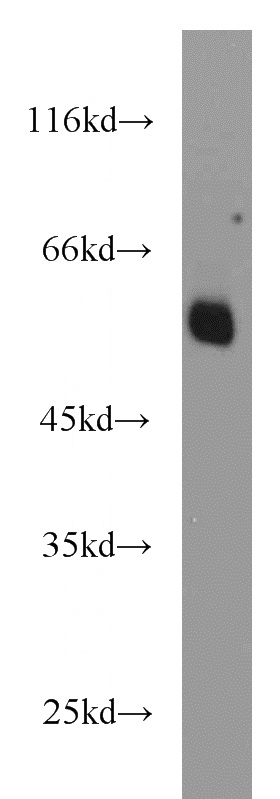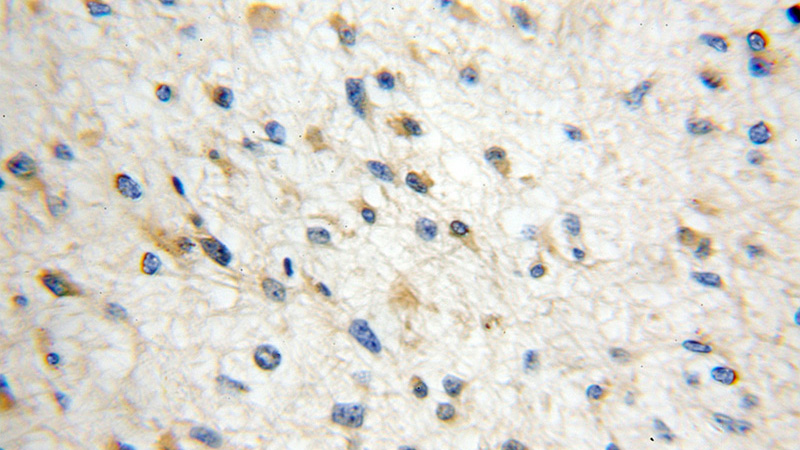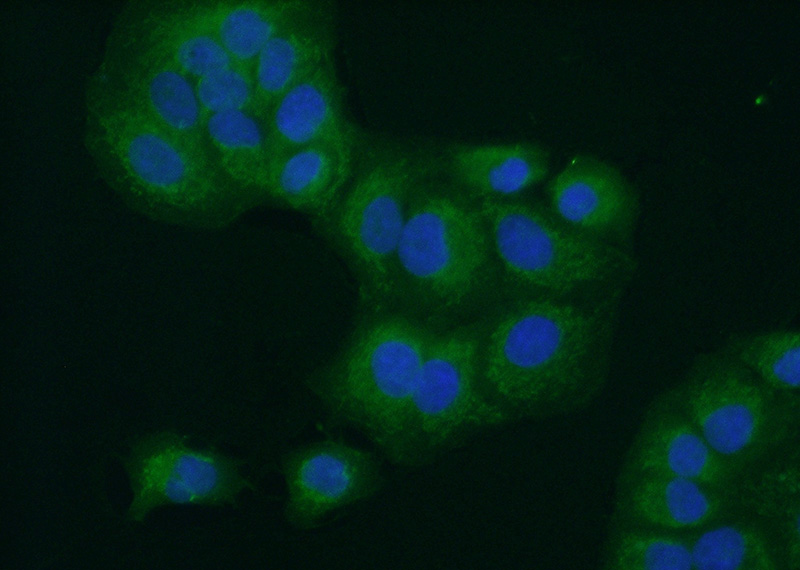-
Product Name
BCS1L antibody
- Documents
-
Description
BCS1L Rabbit Polyclonal antibody. Positive IHC detected in human gliomas tissue, human kidney tissue. Positive IF detected in A549 cells. Positive WB detected in A549 cells, HEK-293 cells, HeLa cells, human brain tissue, mouse colon tissue, mouse kidney tissue, mouse liver tissue, mouse skeletal muscle tissue, mouse small intestine tissue, rat liver tissue. Observed molecular weight by Western-blot: 50-55 kDa
-
Tested applications
ELISA, WB, IHC, IF
-
Species reactivity
Human, Mouse, Rat; other species not tested.
-
Alternative names
BCS1L antibody; BJS antibody; FLNMS antibody; GRACILE antibody; h BCS antibody; h BCS1 antibody; Hs.6719 antibody; MitOChondrial chaperone BCS1 antibody; PTD antibody
- Immunogen
-
Isotype
Rabbit IgG
-
Preparation
This antibody was obtained by immunization of BCS1L recombinant protein (Accession Number: NM_001320717). Purification method: Antigen affinity purified.
-
Clonality
Polyclonal
-
Formulation
PBS with 0.1% sodium azide and 50% glycerol pH 7.3.
-
Storage instructions
Store at -20℃. DO NOT ALIQUOT
-
Applications
Recommended Dilution:
WB: 1:200-1:2000
IHC: 1:20-1:200
IF: 1:20-1:200
-
Validations

A549 cells were subjected to SDS PAGE followed by western blot with Catalog No:117111(BCS1L antibody) at dilution of 1:1000

Immunohistochemical of paraffin-embedded human gliomas using Catalog No:117111(BCS1L antibody) at dilution of 1:50 (under 10x lens)

Immunofluorescent analysis of (10% Formaldehyde) fixed A549 cells using Catalog No:117111(BCS1L Antibody) at dilution of 1:50 and Alexa Fluor 488-congugated AffiniPure Goat Anti-Rabbit IgG(H+L)
-
Background
Human BCS1-like (BCS1L), a mitochondrial inner-membrane protein, is a chaperone necessary for the assembly of mitochondrial respiratory chain complex III. Recently studies indicated that the mutations in this protein may cause the GRACILE (growth retardation, aminoaciduria, cholestasis, iron overload, lactacidosis, and early death) syndrome, a recessively inherited lethal disease characterized by fetal growth retardation, lactic acidosis, aminoaciduria, cholestasis, and abnormalities in iron metabolism.
-
References
- Fernandez-Vizarra E, Bugiani M, Goffrini P. Impaired complex III assembly associated with BCS1L gene mutations in isolated mitochondrial encephalopathy. Human molecular genetics. 16(10):1241-52. 2007.
- Fernández-Vizarra E, Tiranti V, Zeviani M. Assembly of the oxidative phosphorylation system in humans: what we have learned by studying its defects. Biochimica et biophysica acta. 1793(1):200-11. 2009.
- Mineri R, Pavelka N, Fernandez-Vizarra E, Ricciardi-Castagnoli P, Zeviani M, Tiranti V. How do human cells react to the absence of mitochondrial DNA? PloS one. 4(5):e5713. 2009.
- Morán M, Marín-Buera L, Gil-Borlado MC. Cellular pathophysiological consequences of BCS1L mutations in mitochondrial complex III enzyme deficiency. Human mutation. 31(8):930-41. 2010.
- Sánchez E, Lobo T, Fox JL, Zeviani M, Winge DR, Fernández-Vizarra E. LYRM7/MZM1L is a UQCRFS1 chaperone involved in the last steps of mitochondrial Complex III assembly in human cells. Biochimica et biophysica acta. 1827(3):285-93. 2013.
Related Products / Services
Please note: All products are "FOR RESEARCH USE ONLY AND ARE NOT INTENDED FOR DIAGNOSTIC OR THERAPEUTIC USE"
